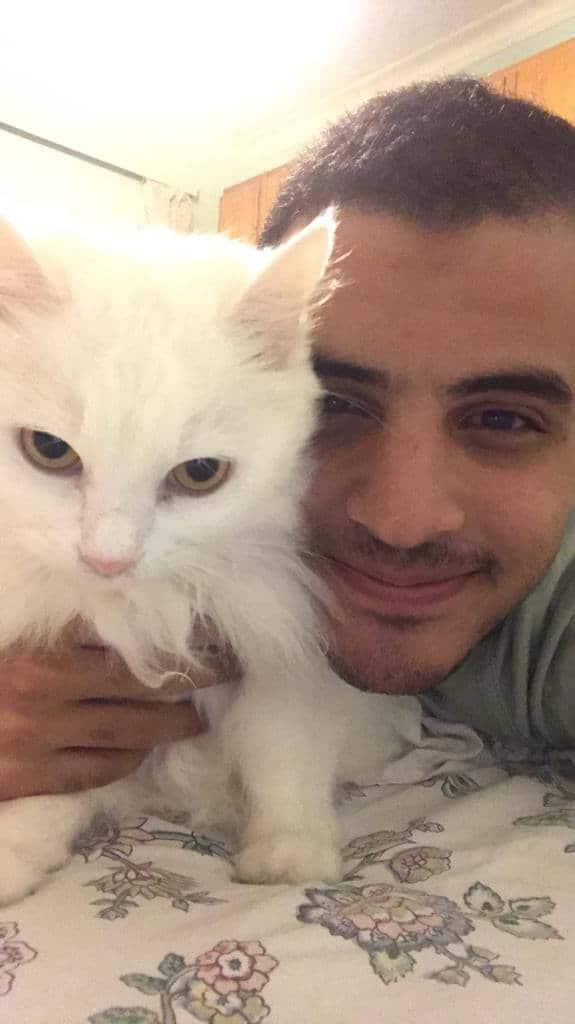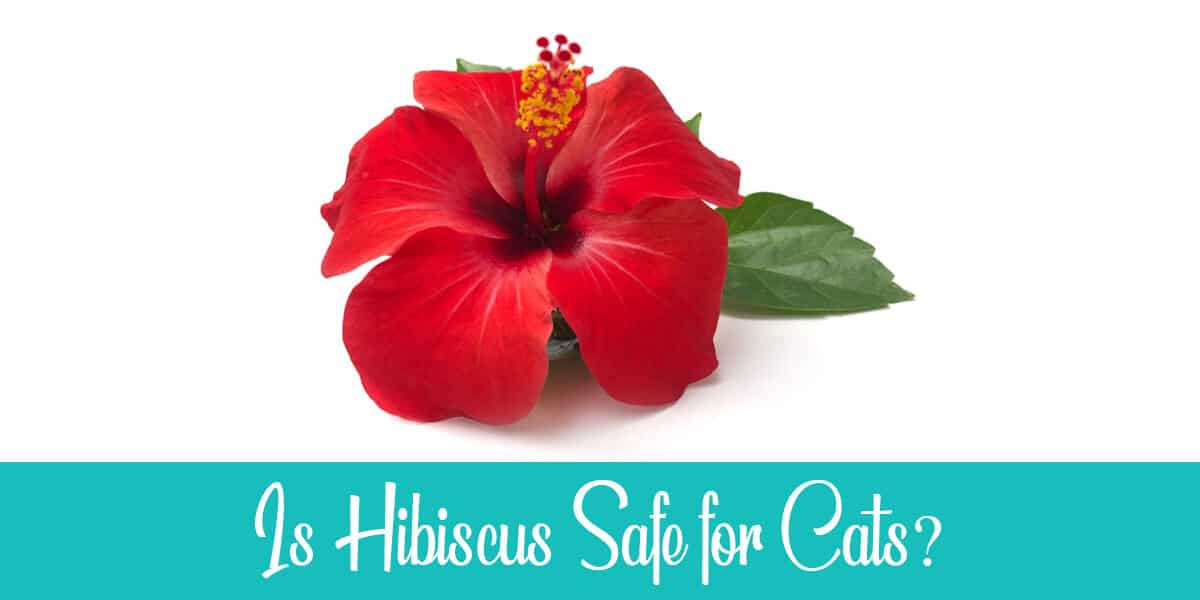Cats are one of the most curious animals out there, loving to explore everything by scratching, smelling, biting, and sometimes chewing. Unfortunately, in their exploration, they’re well known to damage houseplants, some of which, like hibiscus, could be dangerous to them.
Hibiscus plants have large colorful flowers that pique cats’ curiosity. And since many cat owners also keep plants in their houses, cats eating plants is not uncommon nowadays.
Table of Contents
Are Hibiscus Poisonous to Cats?
Yes, they are, but they’re not fatal to your cat. Symptoms could be mild or severe, ranging from loss of appetite to nausea and vomiting. Usually, the problem goes away on its own, but it requires a visit to the vet or even hospitalization in a few cases.
What Are Hibiscus Plants?
Hibiscus syriacus are common houseplants that people grow for various reasons. Their vivid flowers are beautiful to have around just for their looks, but they also offer various medicinal benefits.
These plants are well known for their big colorful flowers with various shades. They range from red to yellow, sometimes even pink. To humans, they’re very pleasing to see. But to cats, they’re big colorful things that they want to chew.
Are Hibiscus Plants Poisonous?
The short answer is yes. Hibiscus plants have a considerable amount of minerals inside them. While the average human digestive system would have no trouble with such a thing, a small delicate digestive system like cats’ (and even dogs’) won’t be able to handle that mineral content easily.
Generally, they cause mild symptoms like loss of appetite, nausea, and vomiting. They could even go unnoticed. However, the more your cat ingests, the more obvious their symptoms will be, and the more likely you’d notice them.
How to Tell if Your Cat Ate Hibiscus
The cat might have eaten a part of the stem, leaves, or flowers. It doesn’t matter much because the symptoms will be the same. Shortly after ingesting them, your cat will get a stomach upset, which eventually makes it stop eating. Later on, the other symptoms might show.
Keep an eye on your cat’s litter box for stains or unusual spills. The spills could be outside the litter box as well since diarrhea is also a common symptom of hibiscus toxicity.
While both of these symptoms might go unnoticed, you should be able to notice how your cat’s producing strange gag-like sounds while opening its mouth and looking at the ground. This is what nausea looks like in cats. Sometimes it might end up with actual vomiting.
If you witness your cat eating hibiscus, don’t wait for the symptoms to start showing, you should take it to the vet right after.
What to Do if Your Cat Ate Hibiscus
The symptoms are mild and go away without any complications in most cases. Sometimes you won’t even notice them. However, consult a veterinarian for further instructions if you do notice them.
Make sure that your cat drinks plenty of water to make up for the dehydration that may have been caused by both diarrhea and vomiting. If the symptoms persist for over two days, more specifically, if your cat stops eating or drinking completely, visiting a vet is a must.
If your cat’s reaction is more severe than expected, the vet may provide IV fluid injection to nourish your cat back to health. The cat will need to be hospitalized at this point.
Related:
– Can Gardenias Harm my Cat?
– Are Gladiolus Poisonous to Cats?
– Are Nemesia Poisonous to Cats?
Stages of Recovery
In most animals, the first good sign of good recovery is eating. Once your cat starts eating and drinking again, it means you’re on the right track.
Constantly check the litter box for diarrhea. The more solid it becomes, the better your cat’s health is getting.
Regularly update your vet about your cat’s condition along with any new signs you may be noticing. In most cases, your cat should be completely back to normal within one week.
How to Prevent Hibiscus Poisoning in Cats
The best way to prevent the incident from happening again is to stop your cat from ingesting the plant again. Unfortunately, your cat can’t tell that hibiscus plants are toxic for them and will be tempted to nibble on them again if they can.
For a plant lover, it’s best to keep your hibiscus in a hard-to-reach area to stop your cat from reaching it, preferably outside your home.
If your cat jumps a lot more than you like, or if you can’t place your plants outside, you should consider having a fence or a glasshouse around them. This would still entertain your feline with all the bright colors but prevent it from eating any part of them.
FAQs
Can my cat show symptoms without eating hibiscus plants?
Your cat doesn’t have to eat the plants, as licking them excessively can still cause some toxicity. Visiting a vet is recommended at this point.
Are there other plants that are toxic to cats?
Yes, there are. While most plants are safe for cats, a few could be toxic, and hibiscus is on the list.
Are all types of hibiscus poisonous to cats?
No. In fact, most hibiscus types are relatively safe for cats. Quite a few of them are still harmful, though, especially Hibiscus Syriacus (Rose of Sharon).
How can I tell if my hibiscus is safe for my cat?
It’s hard to tell at home since most of them have similar characteristics. Consult a botanist over the safety of your plant. It’s best to stay on the safe side and limit your cat’s access to any hibiscus plant you have.
How to stop my cat from eating my hibiscus in winter?
Try to make it as subtle as possible. Don’t let your cat see you while carrying the plant inside, or it will immediately try to figure out what’s the big, vivid thing you just brought inside. Hiding your hibiscus or placing a fence or a glasshouse around them should help out.
To Sum Things Up
So, are hibiscus poisonous to cats? While not lethal to cats, hibiscus plants are still toxic and harmful to your curious furry friends.
Keep an eye out for any symptoms your cat may exhibit, and remember the three most common symptoms for hibiscus toxicity: nausea, vomiting, and diarrhea.
Should your cat show any of these signs, consult a vet and care for your cat till the symptoms gradually disappear. Once the hard phase passes, do your best to prevent your cat from reaching the plant again.

I’ve been living with cats since 2008 and I can confidently say I have more feline friends than humans lol. I currently live with 5 cats in different life stages; two of them are less than one year old, one is 2-ish years old and the oldest two are 9-ish years old. I’ve developed a strong bond with cats over the years and I’m eager to share my experience through this blog. You can learn more about my cats here.

